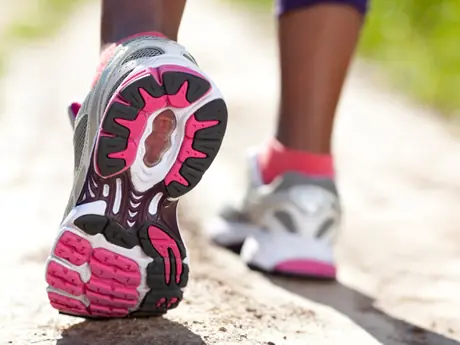
Coaches and running store employees have long espoused the benefits of alternating multiple pairs of running shoes to keep you healthy. Is it really beneficial or just an old runners' tale?
The results of two studies, one published in British Journal of Sports Medicine and the other in Scandinavian Journal of Medicine & Science in Sports, suggest that runners who train in more than one pair of shoes were indeed at a reduced risk for injury. The researchers suggest that the parallel use of more than one pair of running shoes varies the load applied to the musculoskeletal system, which can help protect runners from injury.
In another study presented in Monaco at the 2014 International Olympic Committee World Conference on Prevention of Injury & Illness in Sport, researchers found that runners who had greater variability in their foot strike—greater stride-to-stride differences in variables such as ground contact time and flight time—were less likely to be injured.
More: Stride Right and Improve Your Run
While variability in your foot strike can be a characteristic of gait, it stands to reason that wearing different types of running shoes may also encourage it.
Research from the University of Cape Town revealed more on the premise. In the study, a group of uninjured male runners completed a number of time trials wearing four different running shoe models. Researchers gathered kinematic data using a six-camera motion analysis system and a force plate to examine ground reaction forces. From their findings, they concluded that "different running shoes affect running kinetics and kinematics at or before heel strike but not at mid-stance."
What this means is that different shoes affect things like the dynamics of your knee and ankle, as well as the flexion of your foot. While this may sound insignificant, when you consider that you take around 1,000 steps each mile, it begins to make sense why some variation in foot strike may provide some benefit in lessening injury risk.
"The advantage of wearing different models of shoes with different levels of support is that each shoe affects your biomechanics differently and these subtle changes encourage muscles to work differently in the various shoes—perhaps firing a little earlier or later or contracting a little more or less," says Janet Hamilton, an exercise physiologist and coach in Georgia.
- 1
- of
- 2
About the Author

Get ACTIVE on the Go


Couch to 5K®
The best way to get new runners off the couch and across the finish line of their first 5K.
Available for iOS | Android






Discuss This Article